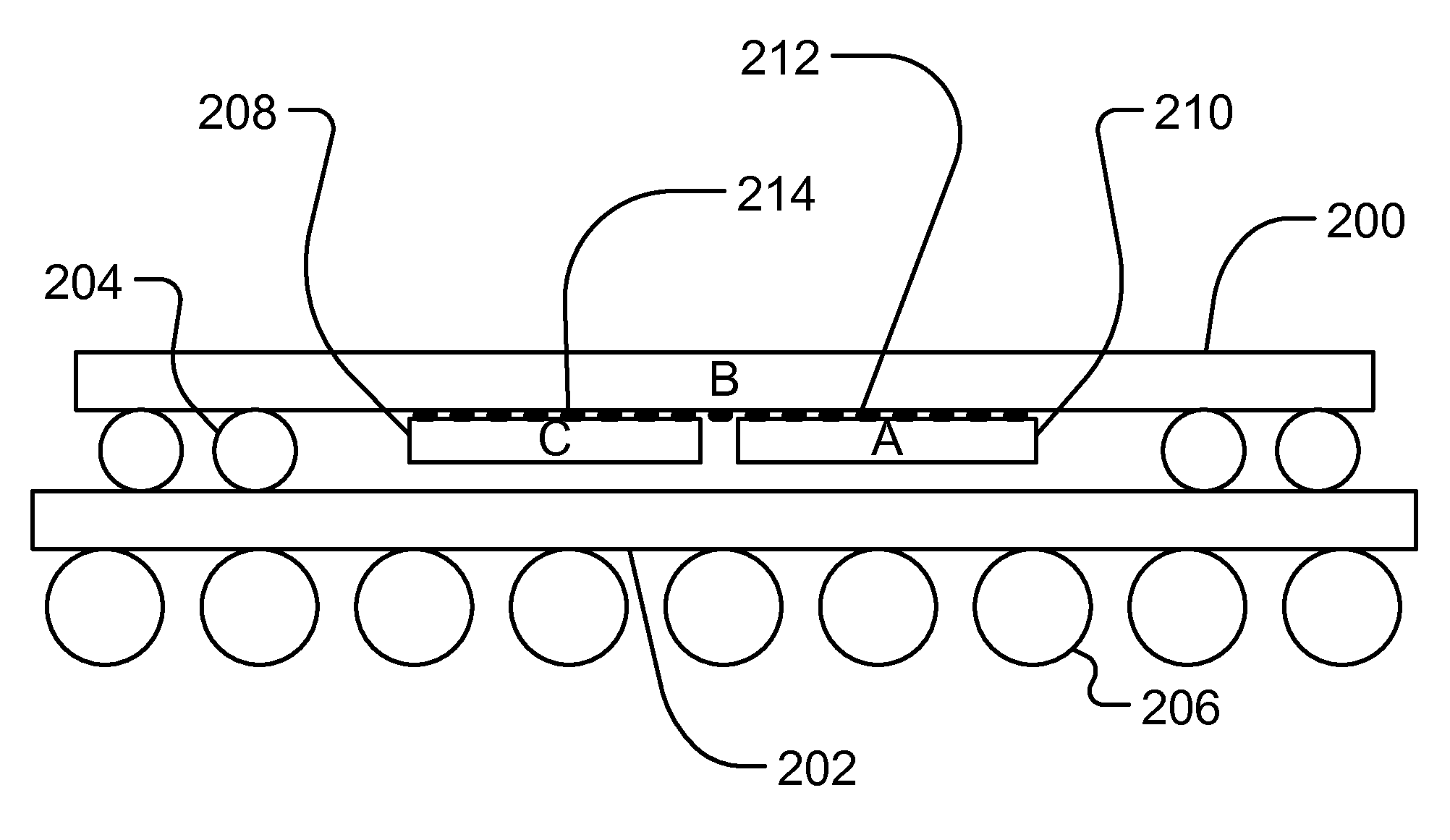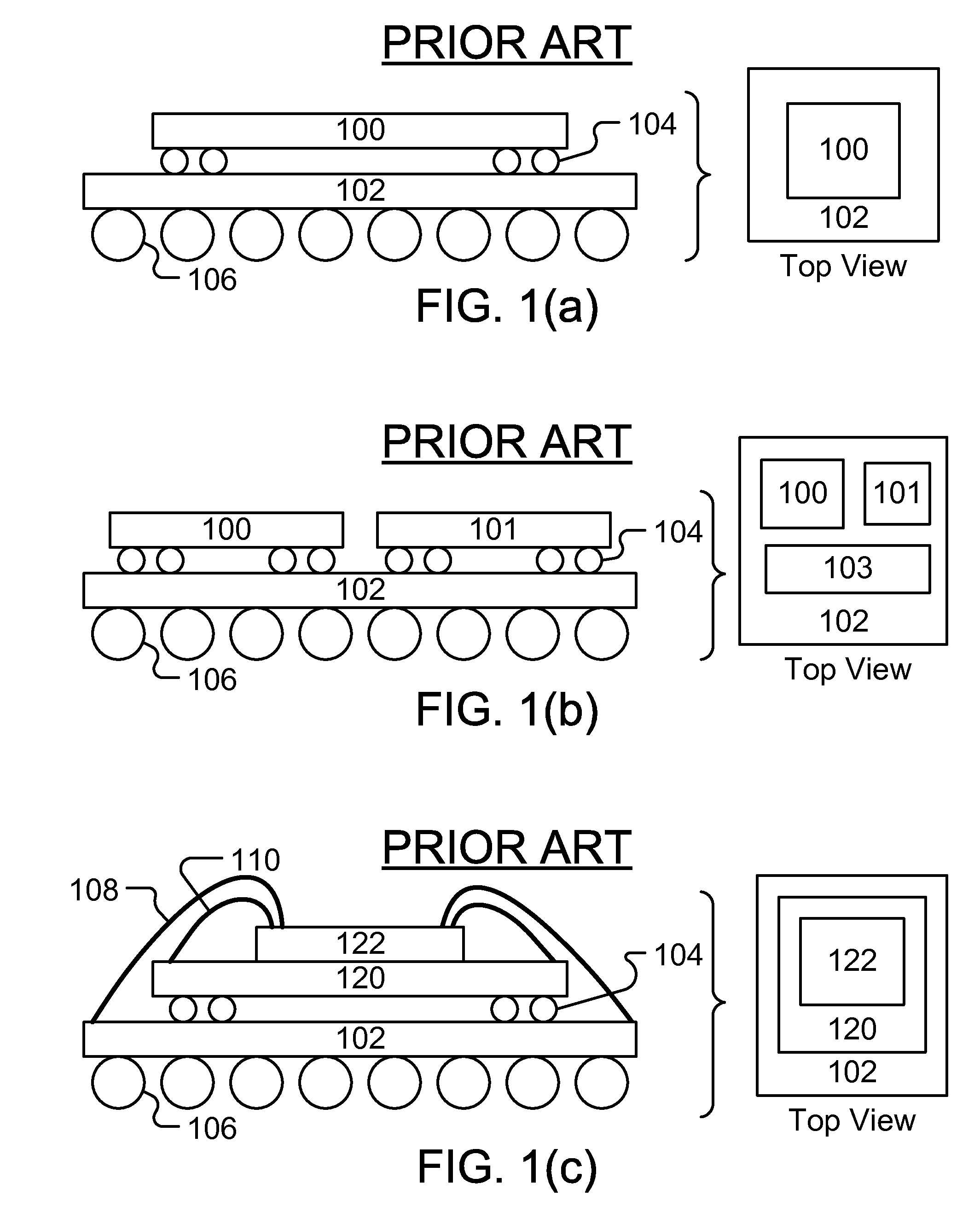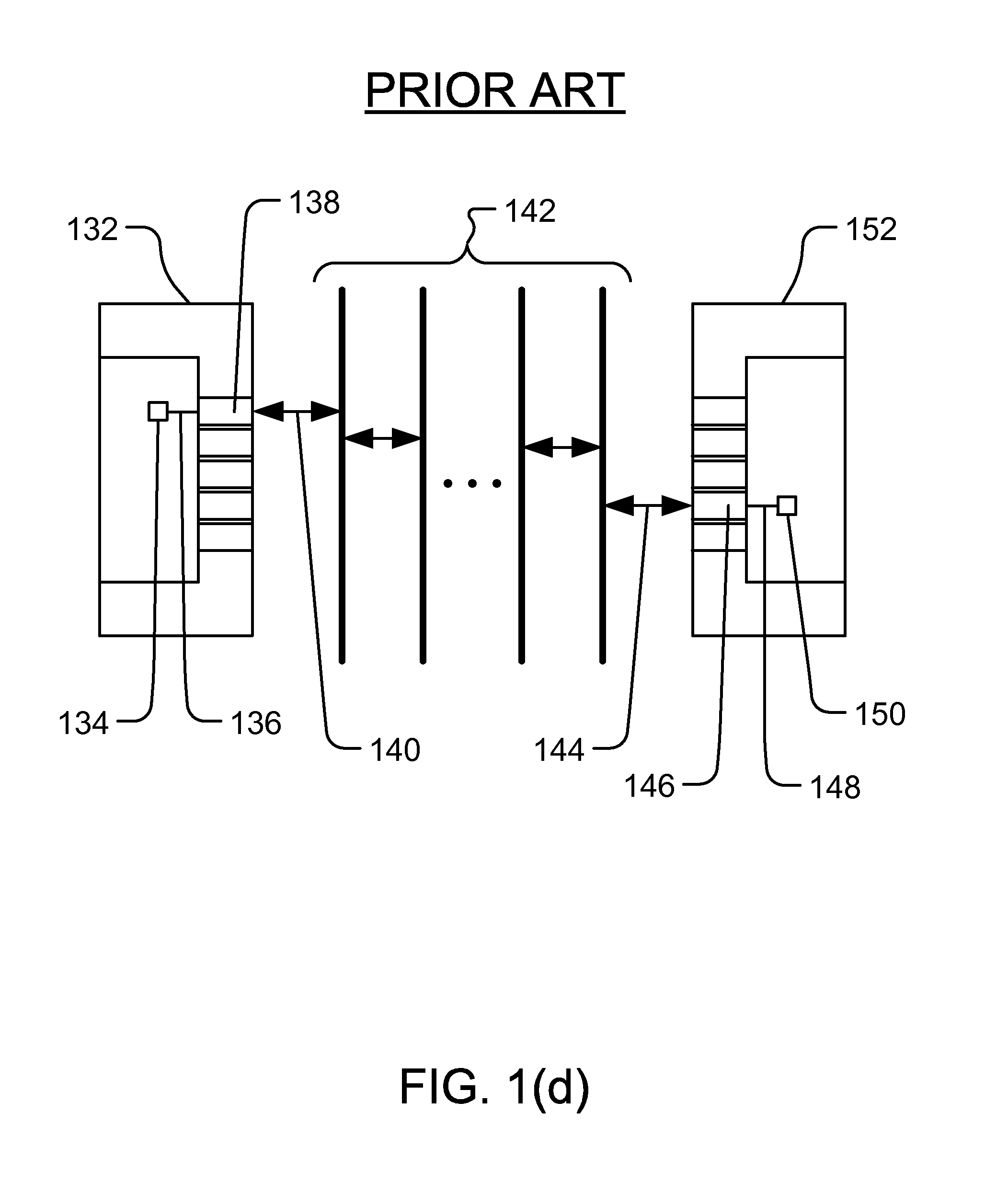Massively parallel interconnect fabric for complex semiconductor devices
a technology of interconnect fabric and semiconductor device, which is applied in the direction of pulse technique, instruments, computation using denominational number representation, etc., can solve the problems of less area and power consumption of parts on the core die substrate, and achieve high density, low cost, and high performance.
- Summary
- Abstract
- Description
- Claims
- Application Information
AI Technical Summary
Benefits of technology
Problems solved by technology
Method used
Image
Examples
other embodiments & examples
[0146]As mentioned above, FPGAs are widely used in many applications, due to their versatility and benefit in various areas, e.g. a) Field Programmability and b) limited or no upfront Non Recurring Engineering cost. However, the FPGA has limitations in 1) area, 2) power, 3) form factor or body size, 4) performance and 5) cost effective path to high volume manufacturing, that prevents the solution to be effectively applicable in many applications, where low power consumptions is high on the list of requirements, such as mobile devices, tablets, etc. Also, device form factors limits deployment of some FPGAs in areas where space is the main constraint, such as hand held micro devices, etc.
[0147]Alternative to FPGAs are offered in the form of ASIC (Application Specific Integrated Circuit), Standard Products, Structured ASIC and in some cases COT (Customer Own Tooling). With these solutions, the die area is efficiently used for functions related to the features of the targeted applicatio...
PUM
 Login to View More
Login to View More Abstract
Description
Claims
Application Information
 Login to View More
Login to View More - R&D
- Intellectual Property
- Life Sciences
- Materials
- Tech Scout
- Unparalleled Data Quality
- Higher Quality Content
- 60% Fewer Hallucinations
Browse by: Latest US Patents, China's latest patents, Technical Efficacy Thesaurus, Application Domain, Technology Topic, Popular Technical Reports.
© 2025 PatSnap. All rights reserved.Legal|Privacy policy|Modern Slavery Act Transparency Statement|Sitemap|About US| Contact US: help@patsnap.com



